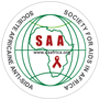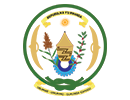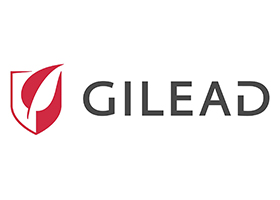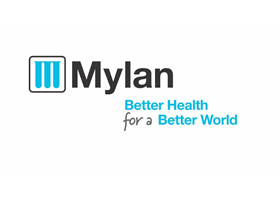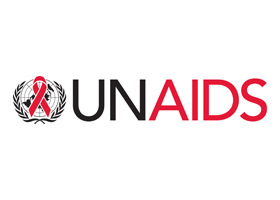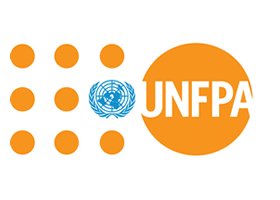Description: This track will encompass all aspects of fundamental HIV biology and the host response to HIV. Areas of focus will include HIV infection and replication, transmission, genetics, evolution, structure and function, pathogenesis, adaptive and innate immune responses to HIV, genetic susceptibility to HIV, interaction of micronutrients, co -infection and progress in animal models. Pre-clinical vaccine, microbicide, and drug development will be important themes of this track.
| HIV evolution, viral diversity and bioinformatics |
| A1. HIV-1/2: Origins, evolution, diversity and response to ARV |
| A2. Molecular epidemiology of HIV diversity |
| A3. Bioinformatics analysis of HIV diversity and drug resistance |
| Immunology of HIV |
| A4. Innate immune responses and function in natural history of HIV infection |
| A5. Humoral immune responses and function in natural history of HIV infection |
| A6. Cellular immune responses and function in natural history of HIV infection |
| A7. Immune responses in resistant cohorts: elite controllers and exposed uninfected |
| Transmission and Pathogenesis (HIV-1/2) |
| A8. Viral determinants of HIV pathogenesis |
| A9. Acute and early HIV infection |
| A10. Animal models of transmission, disease resistance and progression |
| A11. HIV transmission (mucosal and mother to child transmission; other transmission) |
| A12. Ageing and HIV |
| Host genetics and HIV infections |
| A13. Host genetics of resistance and susceptibility and restriction factors |
| HIV: Co-infections and emerging pathogens |
| A14. HIV super-infection |
| A15. HIV co-infection with TB and other pathogens (Hepatitis B, C, HPV...) |
| A16. HIV interactions with emerging and other opportunistic pathogens |
| HIV: Drug development and resistance |
| A17. HIV drug development: Synthetic, traditional and microbicides |
| A18. Molecular mechanisms of drug action and antiviral drug resistance and drug interaction |
| A19. Nucleic acid based HIV and SIV therapies |
| A20. Targeting and HIV persistence during ART (cure strategies) |
| Vaccine development |
| A21. Clinical trials in HIV vaccine development |
| A22. Animal models for vaccine development |
| Interaction of micronutrients and HIV infection |
| A23. Effect of micronutrients in HIV and AIDS pathogenesis, transmission and treatment |
| A24. Mechanisms of micronutrient and HIV interactions |
| Diagnostics tools development (for use in resource limited settings) |
| A25. Novel assays of immune responses in HIV and AIDS |
| A26. Novel assays and cost effectiveness tools for virological monitoring |
| A27. Rapid and cost-effective HIV screening and diagnostic methods |
| A28. HIV drug resistance testing |
| Characterization of HIV latency and viral reservoirs |
| A29. Measurement of HIV/SIV reservoirs |
| A30. Host cellular latency |
| A31. Targeting and eradication of reservoirs |
Description: This track will analyze clinical features of opportunistic infections, malignancies, severe bacterial diseases, co-morbidities in people living with HIV. Issues in antiretroviral therapy, response to ART, adherence, retention, long term follow -up, management of side effects, ART in specific populations (adolescents, Elderly, pregnant women) will also be addressed. Emerging topics such as aging, frailty and in other age-related comorbidities such as cardiovascular, renal, neurocognitive, bone mineral and metabolic diseases will be discussed. Issues of resistance and management of failure including salvage therapy which is a concern in resources limited settings will be addressed.
Abstract Categories
| Clinical course of HIV infection and disease |
| B1. Natural history of HIV Disease including markers of HIV Disease progression |
| B2. Challenges associated with pre-ART patient care |
| B3. Morbidity and mortality/life expectancy during ART |
| B4. Acute and early infection |
| Diagnosis and management of co-infections/co-morbidities |
| B5. Co-infections (TB, Hepatitis, STIs, Cryptococcus, bacterial diseases, leishmaniosis, Malaria and others) |
| B6. Prophylaxis against common infections (CPT, IPT, antifungal) |
| B7. immunization in HIV infected people |
| B8 .Diagnosis and management of Hepatitis B/C |
| B9.Tools for diagnosis and management of infections: point of care |
| HIV and NCDS |
| B10. Diabetes, cardiovascular, renal diseases, bone mineral diseases, HIV and neurocognitive disorders) |
| B11. HIV and malignancies |
| B12. HIV, Ageing and Fragility |
| B13. Diagnosis and management of STI |
| B14. Syphilis, HPV and others |
| Antiretroviral therapy |
| B15. First line therapy (when to start, what to start with, durability) |
| B16. ART monitoring strategies |
| B17. Treatment failure: drug resistance, second line therapy and salvage therapy |
| B18. Adherence and retention |
| B19. Antiretroviral therapy in children |
| B20. HIV management in adolescents |
| B21. Antiretroviral therapy in pregnant women |
| B22 Antiretroviral therapy in elder populations |
| B23. Adverse effects of antiretroviral therapy including immune reconstitution syndrome be sure Track C integrate this (quality of life…) |
| B24. HIV-2, HIV-1+2 infections |
| B25 Management of HIV infection in Key Populations |
| B26. Cost effectiveness of ART |
| B27. Antiretroviral therapy to prevent HIV-Transmission |
| B28 ART maintenance simplification |
| Palliative care and nutrition |
| B29. Pain management and end of life care |
| B30. Clinical nutritional care in HIV infection |
| B31. Home and community based care and support |
| B32. Other Strategies and Therapies (traditional medicine, spiritual care) |
| Clinical guidelines, tools and algorithms |
| B33. Country adaptation of global HIV diagnosis and treatment guidelines |
| B34. Diagnosis and monitoring tools |
Description: This track will focus on HIV and AIDS prevention research and issues related to the design, implementation and evaluation of prevention programs to reach the SDG. It will include examination of Research, methodological and programmatic advances in the continuum of prevention, particularly best practices in HIV prevention for vulnerable populations in resource-limited settings. Strategies to put HIV prevention research into practice, efforts to promote preparedness for bio-medical prevention technologies, and research on new prevention approaches including microbicides, vaccines, pre- and post-exposure prophylaxis, circumcision and other methods will be presented. This Track will also address co-morbidities (Hepatitis, Tuberculosis, and STI’s, communicable end emerging diseases) and emerging.
Abstract Categories
| Basic HIV Epidemiology |
| C1. Natural history of HIV |
| C2. HIV prevalence and incidence trends |
| C3 Trends in morbidity and mortality trends |
| C4. Risk factors for acquisition of HIV, geographic heterogeneity and contextual |
| C5 Epidemiology in general population including sero different couples |
| C6 Epidemiology of HIV in youth, adolescents and children |
| C7 HIV in most at risk populations (sex workers, MSM, prisoners, UD including PWID, migrants) |
| Epidemiology of HIV co‐morbidity and emerging diseases |
| C8. HIV and other sexually transmitted infections (STI) |
| C9. HIV and Tuberculosis co‐infection |
| C10. HIV and Malaria co‐infection |
| C11. HIV and Viral hepatitis |
| C12. HIV and non‐communicable diseases |
| C13. HIV and associated cancers |
| C14 HIV and other Opportunitistic Infections (OI) |
| C15 Epidemiology of emerging diseases |
| Social Epidemiology of HIV |
| C16. Sexual behavior, vulnerability and Most at Risk Populations (MARPS) |
| C17. Socio‐cultural and economic determinants of HIV |
| C18. Relapse of risky behaviors with the advent of ART |
| HIV/AIDS Surveillance and Monitoring and Evaluation |
| C19. Modeling HIV epidemic in the advent of ARTC |
| C20. HIV and AIDS surveillance: Routine, sentinel and second generation |
| C21. Surveillance of opportunistic infections, ART drug resistance |
| C22. Population‐based HIV sero epidemiologic studies, and measuring new HIV infections, including in children |
| C23. Monitoring and evaluation of HIV/AIDS programs |
| Methodological Issues and Capacity‐Building in Epidemiological and Prevention Research |
| C24. Novel research designs in HIV and AIDS |
| C25. Ethical and human rights issues in epidemiological and prevention research |
| C26. Measuring and modeling the impact of the HIV epidemic |
| C27. Methods aimed at measuring recent HIV infections and HIV incidence |
| C28. Surveillance systems and methods including geographical information system |
| C29. estimation of the size of KP |
| HIV/AIDS Prevention Programmes |
| C30. HIV testing services |
| C31. Elimination of Prevention of Mother to Child Transmission |
| C32. Prevention programmes in institutional and community settings |
| C33. Prevention programmes for immigrants, mobile and displaced populations |
| C34.Integrated prevention for PLHIV |
| C35. HIV Prevention technologies |
| C36. New approaches for HIV prevention |
| C37. Integrating HIV prevention into reproductive health, care, support and treatment programmes |
| C38. HIV Testing and diagnosis strategies |
| Diversified prevention tools |
| C39. PeP |
| C40. PrEP |
| C41. TAsP |
| C42. Microbicides |
| C43. Ehealth |
| C44. VMMC |
Description: This track aims to highlight new knowledge and address gaps in the translation of behaviourial and social science evidence into practice, and to contribute to the building of theory and understanding in HIV-related social science. The track also aims to promote understanding of the individual and social determinants of HIV-related risk, vulnerability and impact, to inform development of effective and sustainable HIV responses that are based on human dignity and individual entitlements. This track will feature research, analysis and evaluation on psychosocial factors that shape individual attitudes, experiences, and behaviors; social and structural factors that shape vulnerability and risk; social and cultural norms that underlie individual risk and community vulnerability; programmes that promote acceptation of human diversity and fast track access to HIV and STI prevention, treatment, care and support; social and structural factors that shape vulnerability; and methods and outcomes of individual and community engagement, leadership, empowerment, and self-determination
Abstract Categories
Human rights, law and ethics
| D1. The Law, protection and empowerment of PLHIV and vulnerable populations |
| D2. Human rights and HIV services for vulnerable populations |
| D3. Human rights, ethics and use of antiretroviral drugs for treatment and prevention |
| D4. Children’s rights and HIV |
| D5. Sexual rights and citizenship |
| D6. Human rights, HIV testing, policy and practice |
| D7. Human rights, culture and religion and HIV |
| D8. Social, behavior, culture and harm reduction |
| D9. Ethics, law and research |
| D10. Ethics, clinical services, public health policy and programmes |
| D11. Ethics, human right, access to prevention, diagnosis, treatment and care |
| Stigma, Discrimination and the Legal Environment |
| D12. Experience and impacts of HIV-related stigma |
| D13. Intersecting stigmas and marginalized identities |
| D14. Racism, ethnicity-based social exclusion and HIV control |
| D15. Homophobia and transphobia |
| D16. HIV related stigma, discrimination and access to justice |
| D17. Stigma, discrimination, key and vulnerable populations affected by HIV |
| D18. Stigma, social attitudes, media and public debate |
| D19. Punitive laws, its enforcement and HIV risk |
| D20. Legal protection of people living with HIV, key and vulnerable populations |
| Sex, Sexuality, gender relationship and HIV |
| D21 Gender equality and gender equity |
| D22 Sexualities and sexual cultures |
| D23 Adolescents, young people, sex, sexuality and relationships |
| D24 same – sex- attracted, bisexual and queer people |
| D25 Gender issues and gendered relationships |
| D26 Feminity, masculinity and transgender issues |
| D27 Relationships, partnership, concurrency and sexual networks |
| D28 Sexuality, gender and new prevention technologies |
| D29 Sex, sexuality and HIV co-morbidity |
| Policies, Programs and HIV response |
| D30 Polity, politics and HIV control |
| D31 Harm reduction policies and politics |
| D32 Access to HIV management |
| D33 Policy development, implementation and evaluation |
| D34 Policies for HIV prevention, diagnosis, treatment, care, protection and support |
| D35 Policies and socio-economic determinants of vulnerability |
| D36 HIV policies and the workplace |
| D37 HIV policies and educational institutions |
| D38 HIV policies and intellectual property |
| D39 HIV treatment access and TRIPS |
| D40 Policy analysis and indicators of policy effectiveness |
| D41 Monitoring and evaluation of policies and their impact |
| D42 Evidence–informed advocacy for policy formulation and review |
| Social theories and knowledge production |
| D43 HIV prevention theories and approaches |
| D44 Social and behaviourial science collaboration |
| D45 Methods in social and behaviour surveys |
| Communication, mass media and popular education |
D46 Stratégies de communication sur le VIH et le sida |
| D47 the media and HIV and AIDS |
| D48 Digital media, social networking and HIV prevention, treatment, care and support |
| D49 HIV, media, culture and religion |
| D50 Media and policy making |
| D51 Inter- organizational communication and knowledge transfer |
| D52 intergenerational communication and HIV |
| Socio-cultural determinants of HIV |
| D53 Structures familiales, parenté et réseaux de sécurité sociale chez les populations clés et vulnérables |
| D54 Pratiques traditionnelles néfastes et VIH |
| D55 Jeunes, mondialisation et VIH |
| D56 Croissance, développement, image corporelle et VIH |
| D57 Commerce du sexe, récession mondiale et VIH |
| D58 Approches traditionnelles et complémentaires dans la riposte au VIH |
| Structural determinants of HIV |
| D59 Poverty, social and socio-economic structures and HIV |
| D60 Addressing a feminized epidemic |
| D61 Fertility, family planning, reproductive health services and HIV |
| D62 Reproductive rights, health and HIV |
| D63Family-centered approach to HIV care and support |
| D64 Conceptualizing social and structural factors and their impacts |
| D65 -Poverty, wealth. Income inequalities and HIV |
| D66 Dynamics of social status and power |
| D67 Gender, age, ethnicity, disability and HIV |
| D68 Economic transitions, socio-cultural changes and HIV risk |
| D69 Social dynamics, intergenerational differences and HIV |
| D70 Migrants, migration and population dislocation |
| D71 Violence, conflict and HIV |
| D72 Humanitarian disasters and HIV |
| D73 Gender based violence and HIV |
| D74 Prisons, closed settings and HIV |
Description: This track will aim to provide new insights into the status of the health systems and its capacity and challenges to expanding treatment and prevention in resource-limited settings. At the same time, issues related to health economics, integration of health programs, country ownership of national health and HIV programs, and advancement of a comprehensive and integrated approach to health and rights will be discussed. This Track must show the need for a holistic vision of the fight against the disease by the effective strengthening of health systems. The verticalization of the fight is not a proper and appropriate response in a context where we have recurrent epidemics.
Abstract Categories
| HIV and health system strengthening |
| E1. Leveraging the AIDS response to strengthen health systems and improve other health outcomes |
| E2. Developing Africa’s response to the crisis in human resources for health |
| E3. Procurement and supply |
| E4. Role of community organizations in linking people to HIV services and strengthening the health system |
| E5. Increasing capacity of public health systems to deliver HIV care at scale |
| E6. HIV service delivery in conflict and post-conflict settings |
| Management for health care delivery |
| E7. Gender responsive HIV programming |
| E8. Integration of HIV services with other health and development programs |
| E9. Interventions to increase uptake and retention in HIV services: decentralization and task shifting |
| E10. Interventions to improve retention in the prevention of vertical transmission cascade/continuum, including early infant diagnosis and Option B+ programmes |
| Shared Responsibility and Global Solidarity towards ending AIDS as prerequisite for SDGs |
| E11. Governance – peer review and accountability mechanisms |
| E12. Procurement and supply chain management |
| E13. Investing in HIV more strategically – use of applications of investment approach at country level |
| E14. National financing initiatives |
| E15. International assistance, frameworks and funding mechanisms: Global Fund, PEPFAR etc….) |
| E16. Ensuring accelerated access to affordable and quality-assured medicines and health-related commodities – Pharmaceutical Manufacturing Plan in Africa (PMPA |
| Health economics |
| E17. Building country-level capacity for quality improvement |
| E18. Impact evaluation of different models of health service delivery (cost effectiveness) |
| E19. Effect of health insurance schemes and other support models on access, adherence and outcome |
| Partnership in HIV |
| E20. Private-public, faith-based organizations and NGOs partnerships for prevention, treatment, care and support (service delivery, financing) |
| E21. Intervention to improve adherence to treatment and prevention behavior and technologies |
| E22. Civil society: A driving force in Getting to Zero – Operationalizing partnership with civil society, people living with HIV and key populations |
| Monitoring and evaluation |
| E23. Innovative approaches to track patients, track pre-ART care and other program Data (including connectivity and other mhealth solutions) |
| Innovation and best practices |
| E24. Interventions at last scale (community, district, provincial, regional, country levels) to increase uptake of and retention in HIV services |
| E25. Partnership involving donors, NGOs and government |
| E26. Effects of public-private partnerships, including workplace programmes and policies |
| E27. Innovating HIV response with new technologies |
| Key populations and HIV |
| E28. Working with community-led organizations, including key populations, faith-based groups, traditional healer organizations, and with community leaders |
| E29. Sexual and reproductive health and HIV services: delivery models and cost |
| E30. Inpatient and outpatient services for HIV care and treatment |
| E31. HIV and other vertical programmes e.g. tuberculosis, sexually transmitted infections, drug treatment, family planning |
| E32. Community care with health facility services |
| E33. Integration of HIV and non-communicable diseases (NCD) services |


